
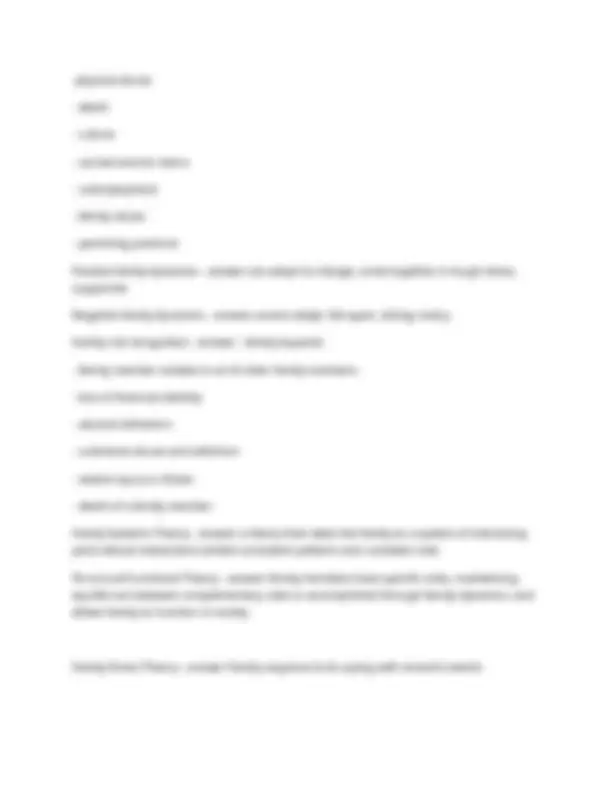
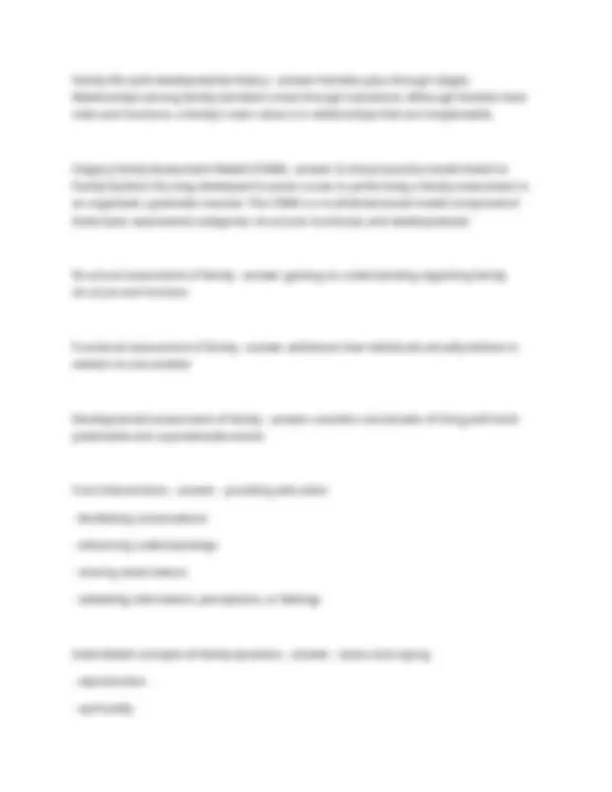
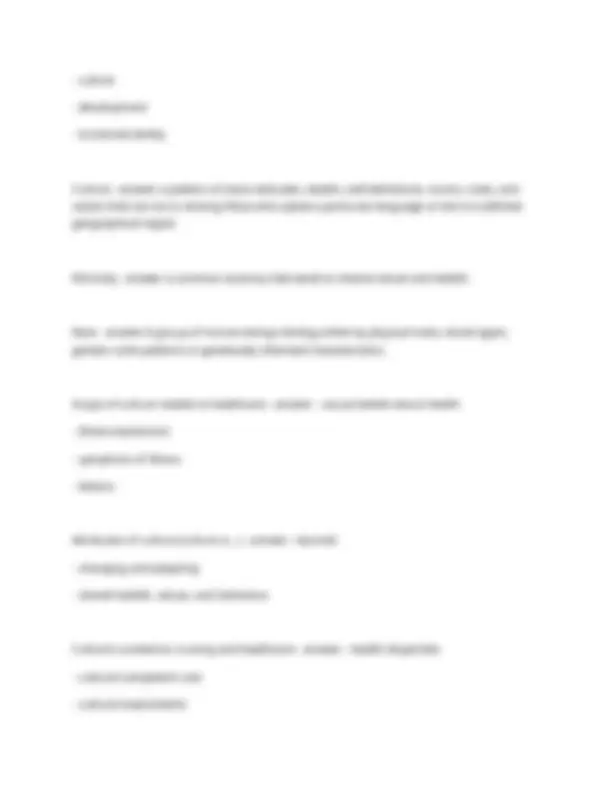
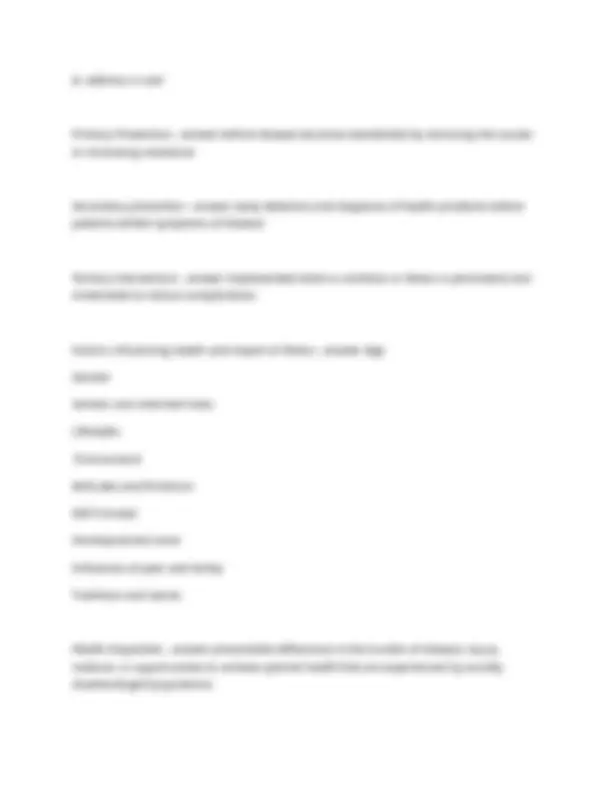
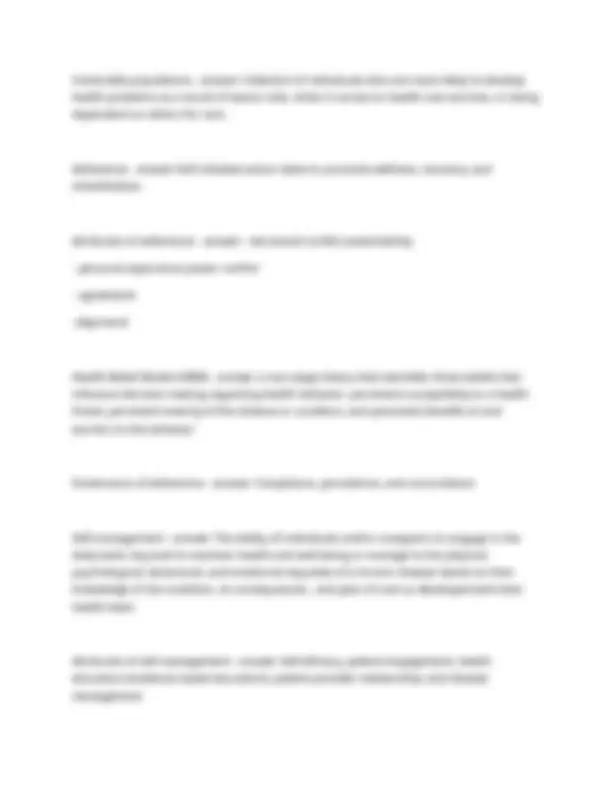


Study with the several resources on Docsity

Earn points by helping other students or get them with a premium plan


Prepare for your exams
Study with the several resources on Docsity

Earn points to download
Earn points by helping other students or get them with a premium plan
Community
Ask the community for help and clear up your study doubts
Discover the best universities in your country according to Docsity users
Free resources
Download our free guides on studying techniques, anxiety management strategies, and thesis advice from Docsity tutors
NSG 1400 EXAM 1 QUESTIONS AND COMPLETE ANSWERS.
Typology: Exams
1 / 9

This page cannot be seen from the preview
Don't miss anything!






Growth - answer a quantitative change in which an increase in cell number and size results in an increase in overall size and weight of the body or any of its parts Development - answer the sequence of physical, psychosocial, and cognitive development changes that take place over the human lifespan Three aspects of change - answer growth, development, maturation Normal human development - answer organized, progressive, follows a predictable sequence across life stages Development milestone - answer skills that provide reference for the rate/pace of how a child is developing Development delay - answer a child that has not attained predictable movement patterns or behavior associated with children of a similar chronologic age Development regression - answer occurs when a child is hospitalized, where they revert back to an earlier development stage (a toilet-trained child begins to wet the bed again) Development arrest - answer occurs when a child stops physical, emotional, or cognitive development before reaching adulthood Pervasive developmental disorders - answer group of childhood disorders characterized by delays in socialization and communication skills; autism and Asperger syndrome are examples Erikson's stages of psychosocial development - answer infancy, toddlerhood, preschool, elementary school, adolescence, young adulthood, middle adulthood, late adulthood Infancy stage (0-1 yr) - answer Trust vs. Mistrust: baby relies on parents for needs to be met
Toddler stage (1-3 yrs) - answer autonomy vs. shame and doubt: toddler is beginning to assert authority over own actions Pre-school (3-6 yrs) - answer initiative vs. guilt: pre-schooler takes on independence and is eager to try new things, focus is on energetic learning School age (6-12 yrs) - answer Industry vs.inferiority- eager to develop skills; motivated to complete tasks Adolescence (12-18 yrs) - answer identity vs role confusion: focuses on who the adolescent is and who they want to become Young adulthood (18-35) - answer intimacy vs isolation: focus is finding love Middle adulthood (35-65) - answer generativity vs stagnation: a concern for establishing and guiding the next generation older adulthood (65+) - answer integrity vs. despair: reminiscing on one's life and accomplishments HIPAA - answer The Health Insurance Portability and Accountability Act, a federal law protecting the privacy of patient-specific health care information Vital sign ranges across the life span - answer Family dynamics - answer -interrelationships between and among individual family members -the forces at work within a family that produce particular behaviors or symptoms -members are self-defined Influences on family dynamics - answer -the relationship between parents -number of children
Family life cycle developmental theory - answer Families pass through stages. Relationships among family members move through transitions. Although families have roles and functions, a family's main value is in relationships that are irreplaceable. Calgary Family Assessment Model (CFAM) - answer A clinical practice model linked to Family Systems Nursing developed to assist nurses in performing a family assessment in an organized, systematic manner. The CFAM is a multidimensional model comprised of three basic assessment categories: structural, functional, and developmental. Structural assessment of family - answer gaining an understanding regarding family structure and function Functional assessment of family - answer addresses how individuals actually behave in relation to one another Developmental assessment of family - answer considers vicissitudes of living with both predictable and unpredictable events Core Interventions - answer - providing education
A- address in care Primary Prevention - answer before disease becomes established by removing the causes or increasing resistance Secondary prevention - answer early detection and diagnosis of health problems before patients exhibit symptoms of disease Tertiary intervention - answer implemented when a condition or illness is permanent and irreversible to reduce complications Factors influencing health and impact of illness - answer Age Gender Genetic and inherited traits Lifestyles Environment Attitudes and Emotions Self-Concept Developmental Level Influences of peer and family Traditions and values Health disparities - answer preventable differences in the burden of disease, injury, violence, or opportunities to achieve optimal health that are experienced by socially disadvantaged populations